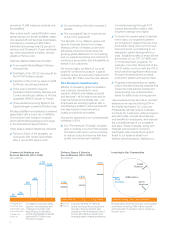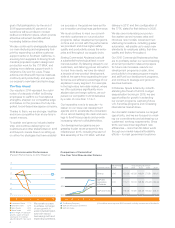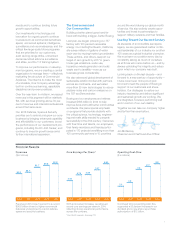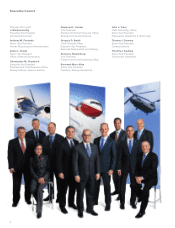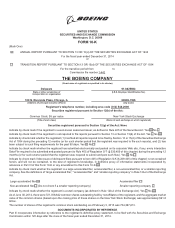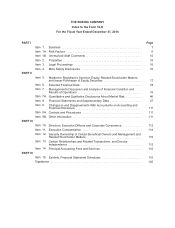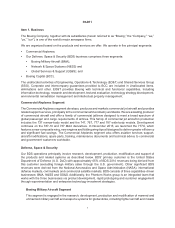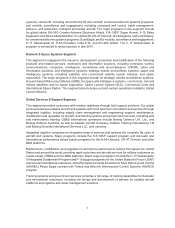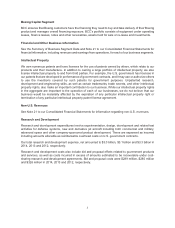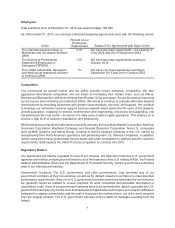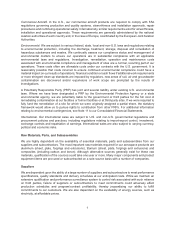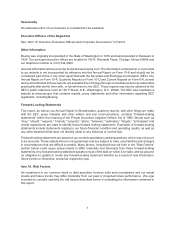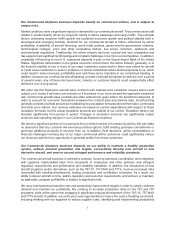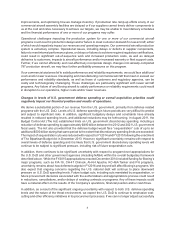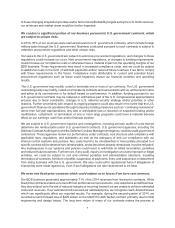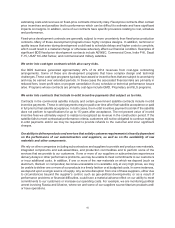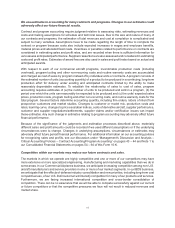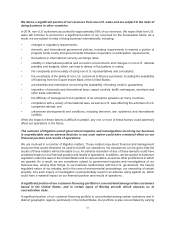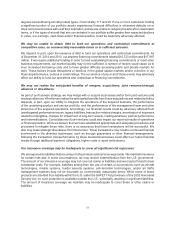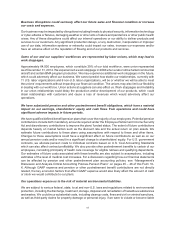Boeing 2014 Annual Report Download - page 16
Download and view the complete annual report
Please find page 16 of the 2014 Boeing annual report below. You can navigate through the pages in the report by either clicking on the pages listed below, or by using the keyword search tool below to find specific information within the annual report.
4
Employees
Total workforce level at December 31, 2014 was approximately 165,500.
As of December 31, 2014, our principal collective bargaining agreements were with the following unions:
Union
Percent of our
Employees
Represented Status of the Agreements with Major Union
The International Association of
Machinists and Aerospace Workers
(IAM)
21% We have two major agreements; one expiring in
June 2022 and one in September 2024.
The Society of Professional
Engineering Employees in
Aerospace (SPEEA)
13% We have two major agreements expiring in
October 2016.
The United Automobile, Aerospace
and Agricultural Implement Workers
of America (UAW)
1% We have one major agreement expiring in
September 2015 and one in October 2022.
Competition
The commercial jet aircraft market and the airline industry remain extremely competitive. We face
aggressive international competitors who are intent on increasing their market share, such as Airbus,
Embraer and Bombardier, and other entrants from Russia, China and Japan. We are focused on improving
our processes and continuing cost reduction efforts. We intend to continue to compete with other airplane
manufacturers by providing customers with greater value products, services, and support. We continue
to leverage our extensive customer support services network which spans the life cycle of the airplane:
aircraft acquisition, readying for service, maintenance and engineering, enhancing and upgrading, and
transitioning to the next model - as well as the daily cycle of gate-to-gate operations. This enables us to
provide a high level of customer satisfaction and productivity.
BDS faces strong competition in all market segments, primarily from Lockheed Martin Corporation, Northrop
Grumman Corporation, Raytheon Company and General Dynamics Corporation. Non-U.S. companies
such as BAE Systems and Airbus Group, continue to build a strategic presence in the U.S. market by
strengthening their North American operations and partnering with U.S. defense companies. In addition,
certain competitors have occasionally formed teams with other competitors to address specific customer
requirements. BDS expects the trend of strong competition to continue into 2015.
Regulatory Matters
Our businesses are heavily regulated in most of our markets. We deal with numerous U.S. government
agencies and entities, including but not limited to all of the branches of the U.S. military, NASA, the Federal
Aviation Administration (FAA) and the Department of Homeland Security. Similar government authorities
exist in our international markets.
Government Contracts. The U.S. government, and other governments, may terminate any of our
government contracts at their convenience, as well as for default, based on our failure to meet specified
performance requirements. If any of our U.S. government contracts were to be terminated for convenience,
we generally would be entitled to receive payment for work completed and allowable termination or
cancellation costs. If any of our government contracts were to be terminated for default, generally the U.S.
government would pay only for the work that has been accepted and could require us to pay the difference
between the original contract price and the cost to re-procure the contract items, net of the work accepted
from the original contract. The U.S. government can also hold us liable for damages resulting from the
default.


